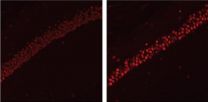(Press-News.org) Sophia Antipolis, 1 March 2012: In a groundbreaking White Paper published today in the European Heart Journal, the European Society of Cardiology (ESC) has set out its perspective on the relationship between the healthcare industry and professional medical associations with regard to the funding and delivery of continuing medical education (CME).
Essential in helping to reduce the burden of cardiovascular disease across Europe – the ESC's over-arching mission – physicians have both a professional and ethical duty to undertake CME in order to provide the highest level of patient care. Without it, medical knowledge can be out-of-date in just five years.
To facilitate this, the White Paper concludes that continued support and funding for CME from industry remains essential, and that the continued co-operation between the academic and private sectors is entirely appropriate as long as it always takes a principled and balanced approach. All such collaboration must also adhere to strict codes of conduct – such as that already in place at the ESC – to maintain transparency and minimise the risk of bias.
In the White Paper, the ESC suggests that avoiding single company sponsorship of CME through the provision of unrestricted educational grants may represent the most transparent way forward within the existing model – an area it believes warrants further research and debate.
Looking specifically at the delivery of educational programmes, the ESC believes a cultural shift may be required to maximise the effectiveness of CME. It proposes a move away from traditional learning formats such as lectures, and instead placing greater emphasis on small group practical sessions based on clinical cases.
The paper also concludes that as a professional, independent association representing more than 71,000 experts within every field of cardiovascular medicine, the ESC is well placed to lead the development of CME. The ESC has already designed a wide range of educational resources and programmes which are independently certified by organisations such as the European Accreditation Council for Continuing Medical Education (EACCME).
In addition, the ESC publishes seven peer-reviewed general and specialist cardiology journals, from which 4.5 million electronic downloads are made every year, and has developed cutting-edge e-learning programmes which it believes will have an increasingly important role to play in CME in the future, by enabling physicians to learn without having to travel long distances.
Entitled 'Relations between professional medical associations and the healthcare industry, concerning scientific communication and continuing medical education – a Policy Statement from the European Society of Cardiology', it is hoped that the document will provide physicians, industry, policymakers and NGOs (non-governmental organisations) alike with much-needed clarity on the most appropriate ways to ensure the continued provision of CME, while at the same time maintaining transparency and public confidence.
Commenting on the importance of the White Paper, ESC President, Professor Michel Komajda says: "The implementation of medical advances is only possible if they are communicated effectively, and every cardiologist has a professional and ethical duty to keep up-to-date to offer patients the best possible care based on this progress.
"Without the healthcare industry's support for the provision of continuing medical education the onus would inevitably fall on the public sector, which is clearly not viable in light of today's challenging economic conditions across Europe."
Continues Prof Komajda: "Therefore, such involvement is necessary and entirely appropriate, but must take place in a principled manner, adhering to a strict code of conduct to ensure complete transparency. As a responsible and independent organisation, which draws on the collective wisdom of its members across all areas of cardiology to make considered and balanced decisions, the ESC is ideally placed to lead the development and delivery of CME in this fast moving and complex specialty and we hope our White Paper and best practice guidelines will make a significant contribution to this process."
INFORMATION:
Notes to editors:
To receive a copy of the White Paper Executive Summary please email or contact the ESC Press Office
About the European Society of Cardiology
The European Society of Cardiology (ESC) represents more than 71,200 cardiology professionals across Europe and the Mediterranean. Its mission is to reduce the burden of cardiovascular disease in Europe.
About heart disease:
Two million people die from Coronary Heart Disease (CHD) across Europe each year:
CHD kills 20% of men and 17% of women in Europe
More than 1.4 million Europeans suffer from angina
275,000 Europeans suffer a heart attack each year.
Globally, CHD affects 1 in 3 people and causes 17 million deaths each year.
Authors
ESC Press Office
+334 9294 7756
press@escardio.org
END
Blue whale vocal behavior is affected by man-made noise, even when that noise does not overlap the frequencies the whales use for communication, according to new research published Feb. 29 in the open access journal PLoS ONE. The whales were less likely to emit calls when mid-frequency sonar was present, but were more likely to do so when ship sounds were nearby, the researchers report.
The study was conducted in the Pacific Ocean off the coast of Southern California by Mariana Melcon and her colleagues from University of California San Diego. Blue whale vocalizations ...
Knowledge about animal diet can inform conservation strategy, but this information can be difficult to gather. A new DNA-based method, which analyzes genetic material from feces, could be a useful tool, and researchers have shown its utility to characterize the diet of snow leopards in Mongolia. The full results are reported Feb. 29 in the open access journal PLoS ONE.
Analysis of DNA from 81 fecal samples showed that the leopards ate mostly Siberian ibex, followed by domestic goats and wild sheep. Most of the animals eaten were wild (79 %), with a relatively low proportion ...
Millions of years after its extinction, Triceratops is inciting controversy about how to classify the ancient animals. New analysis, published Feb. 29 in the open access journal PLoS ONE, suggests that the specimens in question should be classified into two separate groups, Triceratops and Torosaurus, and are not individuals of different ages from the same genus, as others have proposed.
The researchers, led by Nicholas Longrich of Yale University, performed detailed morphological and computational analysis of 35 specimens and found evidence that Triceratops and Torosaurus ...
"We used a trick called earthshine observation to look at the Earth as if it were an exoplanet," says Michael Sterzik (ESO), lead author of the paper [1]. "The Sun shines on the Earth and this light is reflected back to the surface of the Moon. The lunar surface acts as a giant mirror and reflects the Earth's light back to us — and this is what we have observed with the VLT."
The astronomers analyse the faint earthshine light to look for indicators, such as certain combinations of gases in the Earth's atmosphere [2], that are the telltale signs of organic life. This method ...
A repression of gene activity in the brain appears to be an early event affecting people with Alzheimer's disease, researchers funded by the National Institutes of Health have found. In mouse models of Alzheimer's disease, this epigenetic blockade and its effects on memory were treatable.
"These findings provide a glimpse of the brain shutting down the ability to form new memories gene by gene in Alzheimer's disease, and offer hope that we may be able to counteract this process," said Roderick Corriveau, Ph.D., a program director at NIH's National Institute of Neurological ...
Some women considering breast augmentation worry that, after having this procedure, styles will change and they will, of a sudden, be out of fashion. It is important to remember that fashions do change. Every year there are new clothing options, often in flattering shapes and colors. What is more likely is that smaller, undefined breasts actually inhibit you form wearing the latest fashions and may completely eliminate many clothing options.
Style and fashion are not the same thing. Breast augmentation isn't about fashion, it's about style; your style to be specific. ...
In a mouse model of Alzheimer's disease, memory problems stem from an overactive enzyme that shuts off genes related to neuron communication, a new study says.
When researchers genetically blocked the enzyme, called HDAC2, they 'reawakened' some of the neurons and restored the animals' cognitive function. The results, published February 29, 2012, in the journal Nature, suggest that drugs that inhibit this particular enzyme would make good treatments for some of the most devastating effects of the incurable neurodegenerative disease.
"It's going to be very important ...
One year on from the magnitude-9.0 earthquake that unleashed a devastating tsunami and caused a partial meltdown of the Fukushima Daiichi nuclear plant, this month's special issue of Physics World, on the theme of "Physics and the Earth", includes an investigation by journalist Edwin Cartlidge into the latest advances in earthquake forecasting.
In addition to the special issue, physicsworld.com hosts an exclusive video documentary reviewing the fundamental science behind earthquakes and assessing the current efforts that are being made around the world to forecast these ...
Victims of truck accidents often find themselves mired in a frustrating and complex legal process when trying to seek compensation.
Part of this has to do with the number of parties that may be held accountable in a truck accident. The driver, the trucking company, the personnel who loaded the trailer, and even truck part manufacturers can be held responsible for damages in a truck accident depending on the circumstances.
When you hire a truck accident attorney, one of the first things he or she will look for is potential violations of federal trucking laws. The Federal ...
Urgent action is needed to reduce the high concentrations of dangerous air pollutants in Europe, according to experts writing in the European Respiratory Journal today (1 March 2012).
The European Respiratory Society's Environment and Health Committee are urging policymakers in Europe to introduce changes that will ensure the air that we breathe is safe and clean.
The call to action comes ahead of the upcoming review of air quality legislation in the European Union (EU) before the 2013 Year of Air. In the editorial, the ERS committee argues that any new legislation ...

